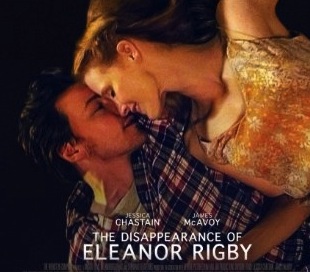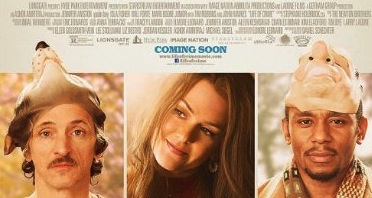 I returned to the filmgoing life this past weekend with a pair of films set in the outdoors, and both showing very different aspects of what the surroundings can offer us.
I returned to the filmgoing life this past weekend with a pair of films set in the outdoors, and both showing very different aspects of what the surroundings can offer us.
The first film, Force Majeure, seen at the luminous Detroit Film Theatre, took a sharp look at how a seemingly minor event can perhaps irreversibly alter an interpersonal dynamic. This type of storyline is often seen with significant dramatic heft, such as The Impossible from a few years back, but rarely in subtlety, and that made it all the more intriguing.
We’re introduced to a Swedish family of four as they settle in to their long-awaited holiday in the French Alps. Dad’s a workaholic, Mom is career-oriented but staying aware of the family, and the kids are tuned in to the electronic generation, but happy to be there. A veranda mountaintop lunch near the start of their trip initially seems scenic and pleasant, until a loud crack is heard and an avalanche starts heading directly at them. Only problem is, Dad freaks out and leaves the other three out in the chill. It’s not a spoiler to say that everything is fine, physically, after that, but everything is not cool, mentally, following that development. The story dabbles in gender politics as the man and woman initially demonstrate differing opinions and memories of the incident, and they struggle to determine how they can best move on as a family from the situation.
The director, Ruben Östlund, adds numerous subtle artful touches throughout the story, such as a recurring piece of classical music, artistic framing with the characters in one corner of the image, and a careful control of performances range, as in one scene an action or objective may be implied but the next may be quite differently stated. He’s aided by capable and committed performers, particularly Lisa Loven Kongsli in the central role of the mother. I also appreciated how the film built to a surprisingly ambiguous conclusion, with two last-act surprises testing the will of the family as they prepare to make their way back to their Real Lives.
My Rating – new for 2015! – ***1/2 stars
The next night (last Saturday the 10th) I returned to The Maple Theater, perhaps this area’s second – most classiest film venue after the Detroit Film Theatre. I’m sure that the Friday DFT visit put me in the mood to go there again, and where there were several options on where to see Wild, the film of the night, this choice added to the experience.
 With a movie at the Maple, it isn’t so much about the screening rooms themselves, which are clearly 70’s-80’s style slightly bigger than shoebox auditoriums – and very reminiscent of my hometown movie theatre – it’s the initial experience of going to the venue, which was refreshingly evident that night as a jazz concert (pictured at right) took place in the coffee/wine bar section of the building. It may be seen by some as a snobby touch, but for me, something like that is very important to set the tone of the evening and make it into more of an experience, especially in this day and age with so many forms of media and personal entertainment devices competing with each other (and us, as audience members) for time and attention.
With a movie at the Maple, it isn’t so much about the screening rooms themselves, which are clearly 70’s-80’s style slightly bigger than shoebox auditoriums – and very reminiscent of my hometown movie theatre – it’s the initial experience of going to the venue, which was refreshingly evident that night as a jazz concert (pictured at right) took place in the coffee/wine bar section of the building. It may be seen by some as a snobby touch, but for me, something like that is very important to set the tone of the evening and make it into more of an experience, especially in this day and age with so many forms of media and personal entertainment devices competing with each other (and us, as audience members) for time and attention.
The movie itself, Wild, was a great choice to begin my Hollywood film year, where I began my 2015 with several days back in the Northwest, where the majority of the film takes place, and had been in California prior to that. The film is quite obviously meant as a return to dramatic form for actress Reese Witherspoon, who also produced the project and has noticeably struggled with audience expectations of her film performances since winning an Oscar for Walk the Line back in 2005. Having followed Witherspoon’s career slightly since her earlier films in the mid-90’s, it seemed to me that this movie was her attempt to channel several of those earlier roles as well, such as doing nudity on screen for the first time since Twilight (no, not that Twilight), adding vampy looks and excessive makeup as she did in Freeway, and showing a mix of cunning, sweetness and resourcefulness as she did in Cruel Intentions. Needless to say, Witherspoon has just been rewarded for her efforts with an unsurprising Oscar nomination for Best Actress… but I think it will be more interesting to observe where she goes from here with her regained dramatic momentum.
I was not familiar with the story of Cheryl Strayed and her 1995 trek up the Pacific Crest Trail prior to seeing this film. I’m sure that it is a case of the book being better than the movie, but the movie version, while ultimately unfocused, did have some redeeming qualities. Director Jean-Marc Vallée creates an intriguing dream-like atmosphere by focusing on Cheryl (Witherspoon) and her immediate experiences hiking the trail, but often cutting away to memories from her past, many of which involve her late mother (Laura Dern) as a way of filling in her backstory. The frequent cutting away reached a point of being distracting for me as the story went on, and I would have preferred that it stop after a certain point. When it did get less frequent, about two-thirds of the way through the story, I found that added much more dramatic intensity to the immediate story. The film does an excellent job of evoking period detail from 1995, including spontaneous celebrations of Jerry Garcia’s life, now-anachronistic reliance on payphones, and a reminder of a very annoying pop song that was popular towards the end of that summer that I can’t find the title of.
Witherspoon expectedly performs well in the demanding lead role, but at times seems to be trying too hard to show and use range, perhaps going back to the idea that this was a pet project for her. Laura Dern creates a warm presence as the mother, but is not given much time to develop the part due to the constant back and forth of the story. Still, it was refreshing to see Dern appear in the film, as she often seems like an actress who doesn’t fit the stereotype of the Hollywood character actress and thus may not be seen onscreen as much as she could or should. Indie darling Gaby Hoffmann appears in a few scenes as a friend of Cheryl’s, and I would have liked to have seen more of her. The nature of the story doesn’t allow for a much more substantial supporting cast beyond that.
My Rating – **1/2




